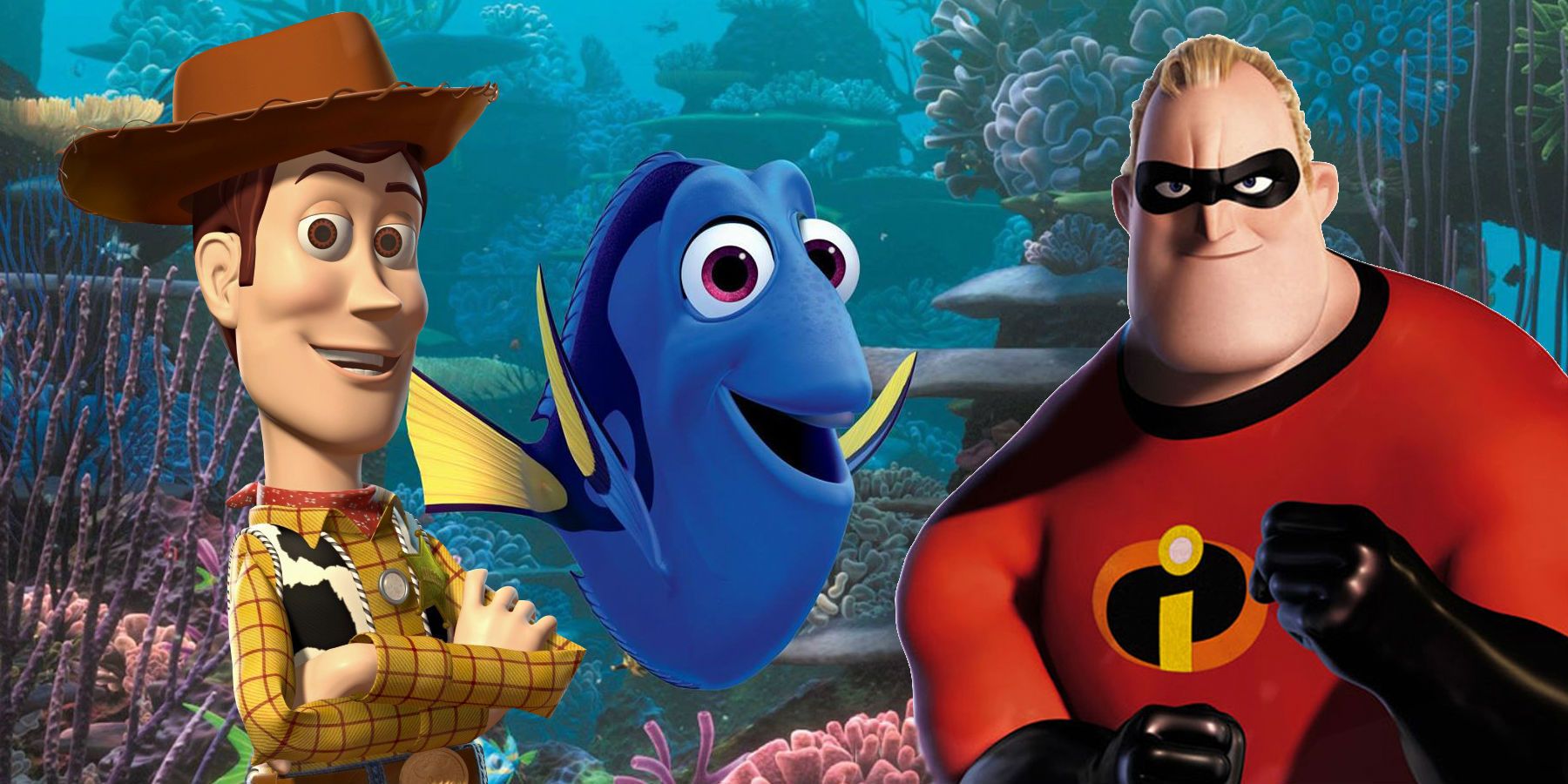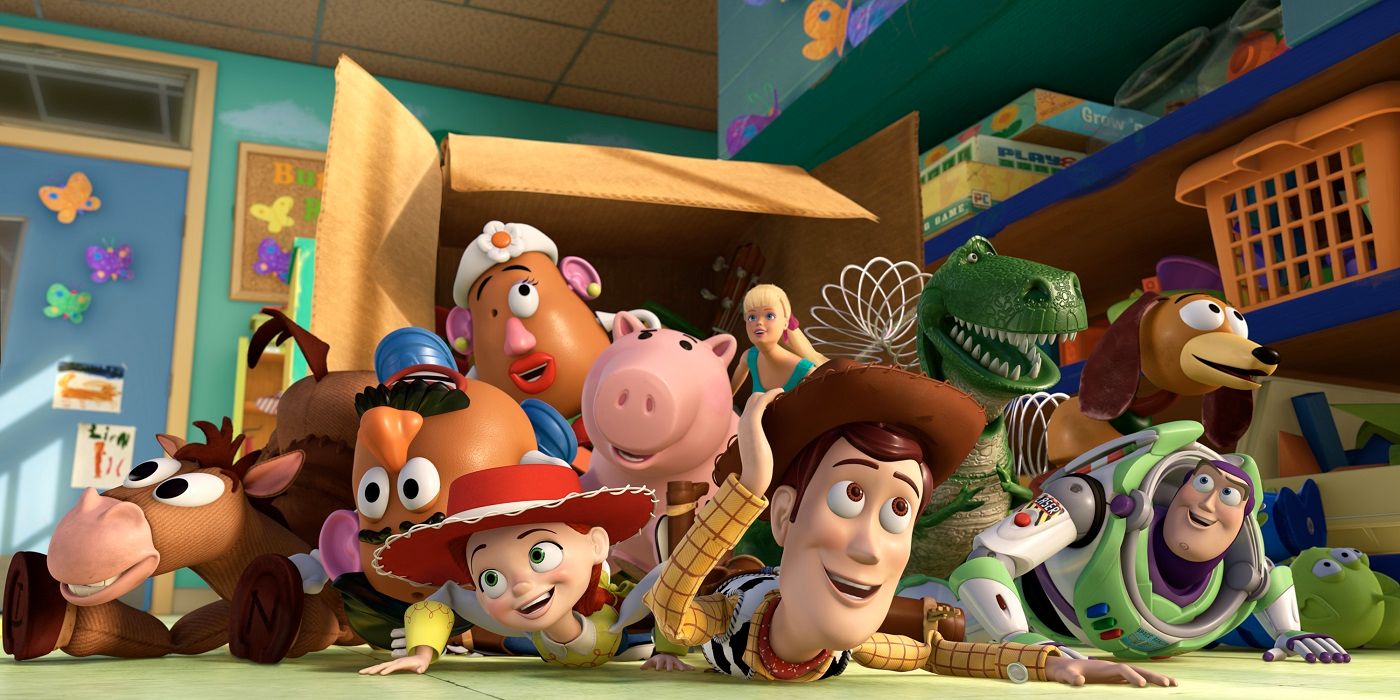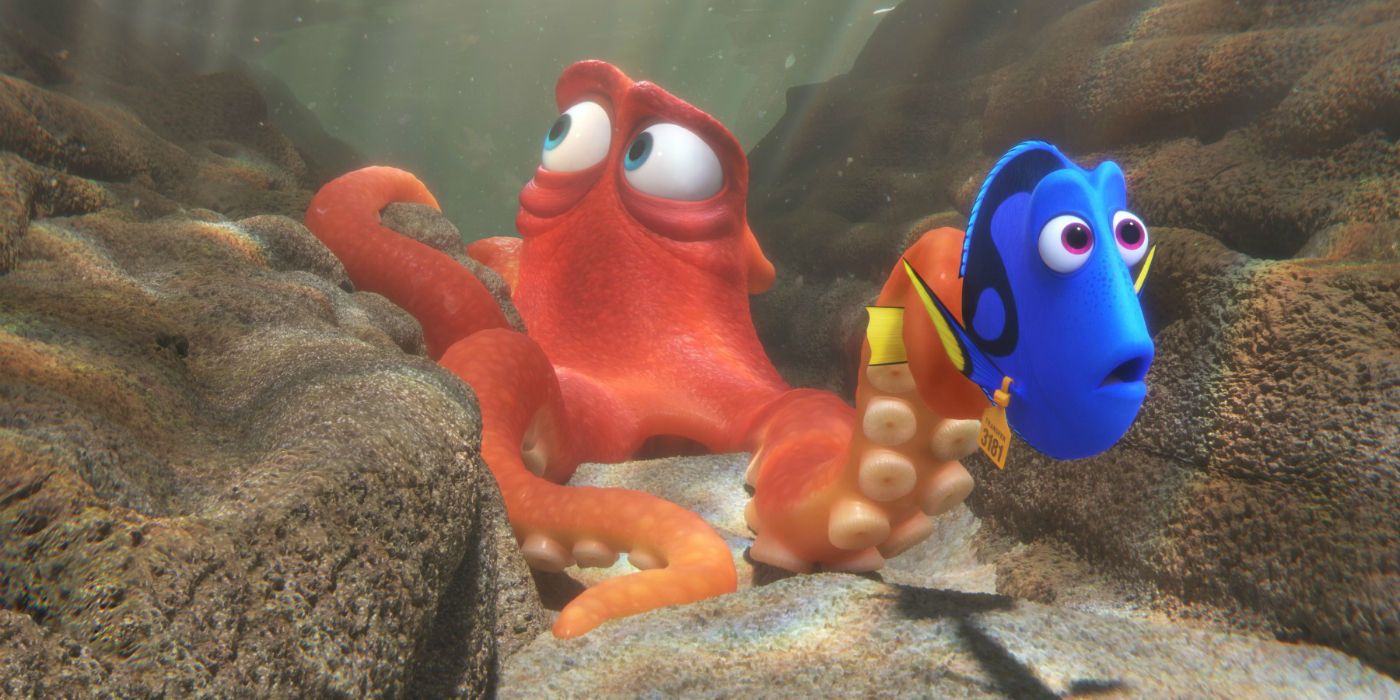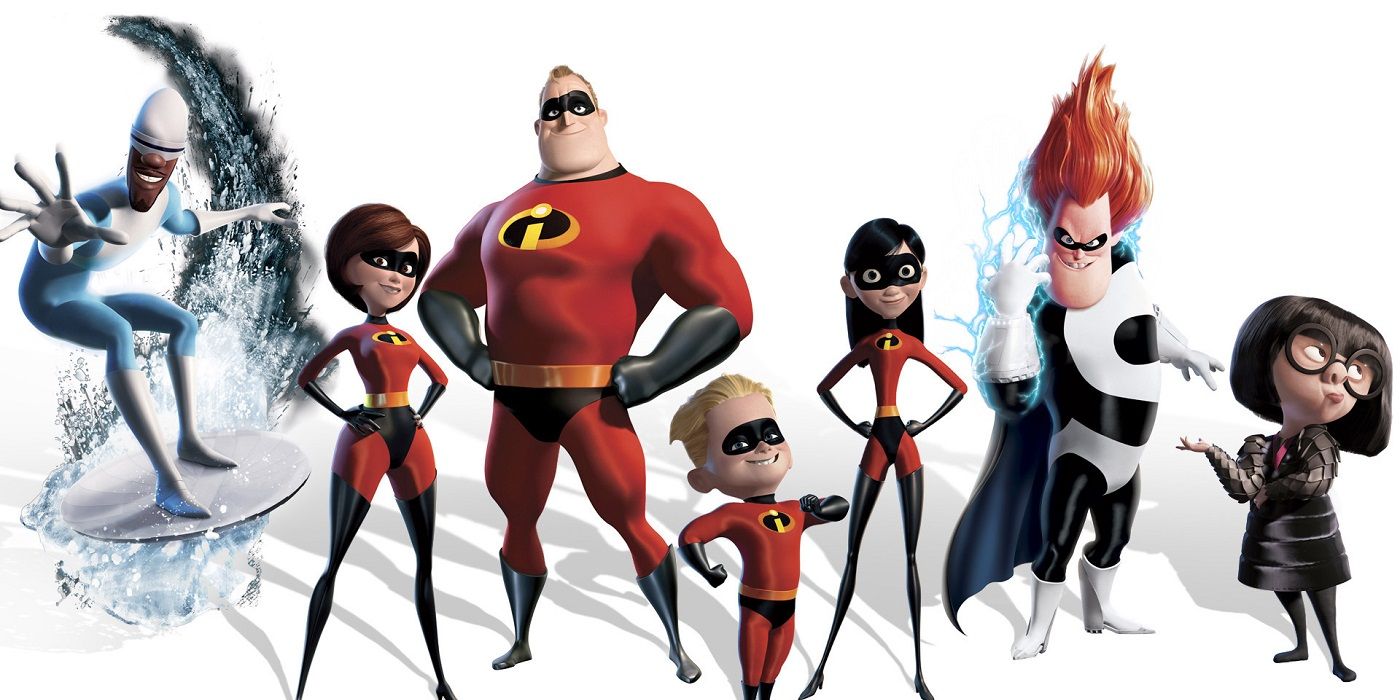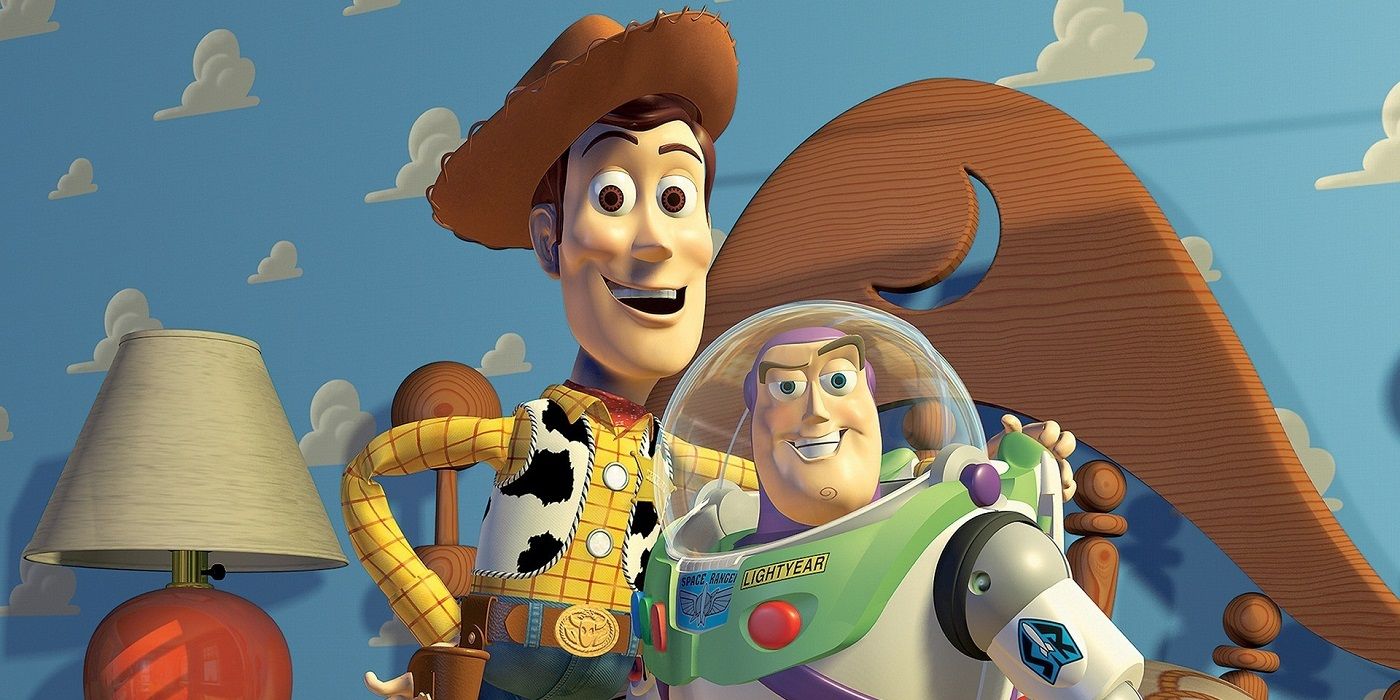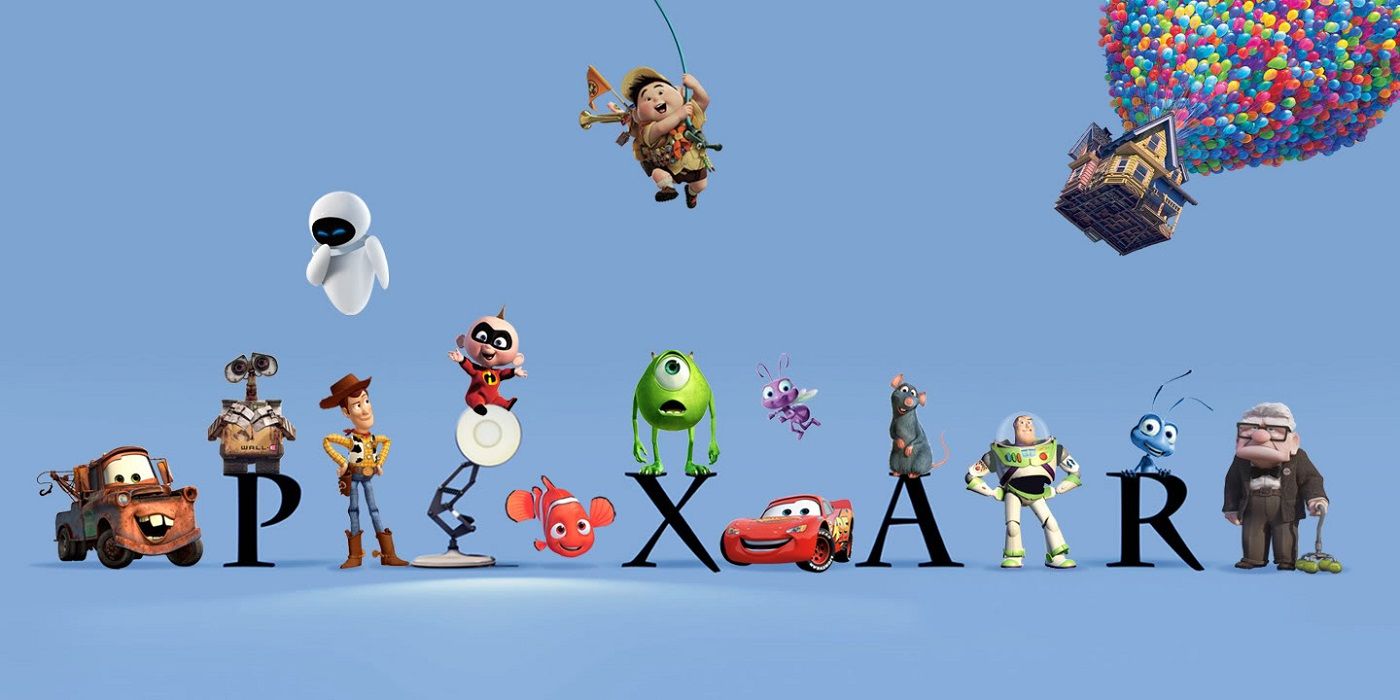As the film industry leans more and more on reboots, remakes and massive franchises based on pre-established intellectual properties, Pixar Animation Studios has long been a beacon of hope for audiences craving original content. Reinventing the art form of the animated film, the geniuses at Pixar blended creativity with genuine emotion, building a stellar reputation as a place where film fans of all ages could come and enjoy new stories that touched on the human condition in ways never thought possible. Before Pixar came around, did you ever thing you'd cheer for a rat cooking in a restaurant or cry because a monster had to say goodbye to a child?
In recent years, however, Pixar has green lit a fair number of sequels; three of their next four films are followups to previous works, and that doesn't include this summer's Finding Dory (sequel to 2003's Finding Nemo), which was just released in theaters. With Pixar focusing more on franchises as the likes of Cars 3, Toy Story 4, and The Incredibles 2 make their way to the multiplex, some fans are concerned that the animation powerhouse is losing its way - especially since many of their films from the early days were inherently standalone and never begged for future installments. But Finding Dory has proven the skeptics wrong, earning a response just as favorable as Pixar's most acclaimed movies (read our review), so one has to wonder if there's much to worry about this upcoming sequel binge after all.
Taking the Time For the Story
By the time The Incredibles 2 is released in June 2019, Pixar will have released 21 films altogether. Only eight movies from that output are sequels (including the prequel Monsters University), meaning that a majority of Pixar's résumé is still original programming. When compared to some of their competitors, that's hardly a blip on the radar. DreamWorks Animation has produced numerous sequels and spinoffs in the Shrek, Madagascar, Kung Fu Panda and How to Train Your Dragon franchises already (10 total) and have The Croods 2 and How to Train Your Dragon 3 coming through the pipeline. Blue Sky has 11 films to their name, nearly half of which are Ice Age films (including this summer's Ice Age: Collision Course). Simply put, Pixar cannot be accused of milking a property for all it's worth and producing shameless cash grabs when they'll only be in the single digits into the next decade.
Just about every film in the Pixar canon (save for Good Dinosaur) has been a box office smash, meaning the financial incentive was always there to make sequels to some of their most popular movies. The thing about Pixar is that they like to take their time to craft a story that's worth telling before moving forward on a second (or third) entry in a series. A Finding Nemo sequel very easily could have come out a couple years after the original won the hearts of moviegoers, but director Andrew Stanton waited 13 years for the time to be right and return to the well, shining the spotlight on lovable blue tang Dory with an inspiring narrative about overcoming personal adversity.
Hollywood has no shortage of great films that never called for a sequel, but there are plenty of stellar followups as well. The trick to justifying them is to follow a story thread left unresolved in the predecessors so they feel like a natural continuation. Dory pulled this off by fleshing out one of Nemo's standout supporting characters, creating a necessary chapter to the series that provides closure and comfort. Stanton long talked about his personal motivation for making Finding Dory (he wanted to know that Dory could always find her way home), and that care is apparent from what's on the screen. Whether Pixar comes up with a third Finding [insert fish name here] film or not, many viewers are happy Stanton came back to tell a story with a strong message that didn't simply retread the original.
The same can be said for The Incredibles 2 and Toy Story 4. As a burgeoning superhero franchise, Incredibles has been ripe for more content for years, and fans will finally see one 15 years after the first. Toy Story 4 - while potentially stepping on the toes of a perfect film trilogy - is coming out eight years after Toy Story 3 grossed $1 billion (again, Pixar's in no rush) and will take the series in a new direction separate from the traditional Andy storyline. It's been described as a love story in which Woody and Buzz Lightyear search for Bo Peep, a character who was arguably unceremoniously written out of the third installment. For longtime fans, it will be nice for her to receive a more formal conclusion as she reconnects with her friends. Even Cars 3 promises to have an emotional narrative, serving as tribute to the late Paul Newman's Doc Hudson character, and that's a nice hook.
The Filmmakers Matter
Taking the time to ensure the story is in the right place is one thing, but the filmmaker calling the shots is even more important. Pixar's history is the ideal illustration of that fact. During the company's heyday in the 2000s, every single one of Pixar's movies was directed by one of four men: John Lasseter, Pete Docter, Brad Bird, and the aforementioned Stanton. In that time, the studio produced seven pictures, five of which won the Best Animated Feature Oscar. So it shouldn't come as any surprise that Stanton's Finding Dory managed to delight as well; he's part of Pixar's Mount Rushmore, and knows how to make the most of the studio's classic formula.
The involvement of one of those four is even more pertinent when the complete creative team of each outing is analyzed. The films that are considered "second tier Pixar" - Brave, Monsters University, and The Good Dinosaur - have no involvement (not even a story credit) from any of the four mentioned in the above paragraph. Lasseter spearheaded the maligned Cars series, but he never collaborated with Stanton, Docter, or Bird on the first two installments (Brian Fee will direct Cars 3 from a script by Robert L. Baird and Dan Gerson). Last year's Inside Out, seen by many as Pixar's glorious return to form, was directed by Docter. Chalk it up to coincidence, but the evidence is fairly apparent that Pixar needs one of their elite to elevate a project to the next level.
This trend bodes well for Incredibles 2 and Toy Story 4. Bird, who directed the first Incredibles, is following Stanton's lead and helming and writing the followup. Lasseter, who built Pixar's brand by directing Toy Story and Toy Story 2 is making the fourth one, with Stanton, Docter, and Toy Story 3 director Lee Unkrich helping him craft the story. Until proven otherwise, it's safe to say that Mr. Incredible and Woody are in good hands, with filmmakers who will stop at nothing to ensure their latest adventures live up to the high standards set by what's come before. Even if these sequels aren't as good as their predecessors (a tall order indeed), chances are they'll still be high quality works that resonate.
If there's one downside to this, it's that relying on one of four specific filmmakers isn't necessarily the best plan for prolonged success. Stanton has already expressed his desire to focus on to live-action, a realm that Bird has dived into as well. The onus will be on Pixar to find the next generation of talented directors so they can continue to thrill audiences. Unkrich seems to be next in line; he co-directed Toy Story 2, Monsters, Inc., and Finding Nemo, and is also helming next fall's Coco (an original film about Mexico's Day of the Dead). If he remains with Pixar that's great, but the studio needs to find more people who can step in and replicate (to the best of their ability) what Lasseter, Bird, Docter, and Stanton have done the last two decades. That obviously won't be easy, but it's a task that must be completed eventually.
Conclusion
After Pixar made a name for themselves with one original film after another, the sudden influx of sequels justifiably caught some viewers off guard since it went against the norm. But as Finding Dory (and Pixar's history) has shown, green lighting a collection of followups is not an indication the studio is out of ideas or resting on their laurels to turn a quick profit. Yes, the high box office receipts for Dory are nice to have, but what's always mattered most to Pixar is telling a heartfelt story that's emotionally impactful. That's how they became the biggest name in animation, and they understand the audience's expectations.
Time will tell if the likes of Incredibles 2 and Toy Story 4 can continue that grand tradition, but the odds are that they will. Bird and Lasseter love their creations as much as moviegoers do, and they most likely would not have come back unless they felt they had a narrative worth sharing with the world. Even with the rise of Disney Animation (Frozen, Zootopia) and the arrival of a LEGO Movie shared universe, Pixar is still the studio to beat in this realm of Hollywood. They've been the best in the business for so long, they've more than earned the benefit of the doubt and should be trusted to deliver whatever film they deem fit.
Finding Dory is now playing in U.S. theaters; Cars 3 opens June 16, 2017; Toy Story 4 on June 15, 2018, and The Incredibles 2 on June 21, 2019.

